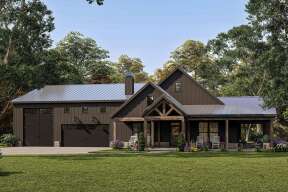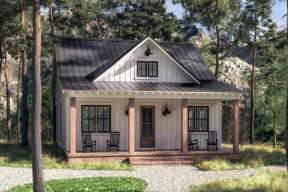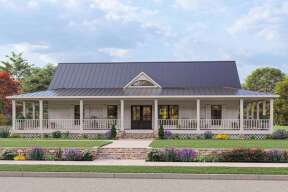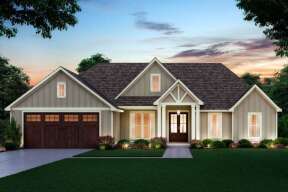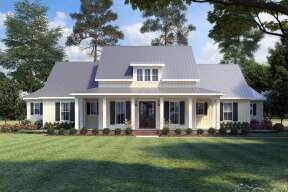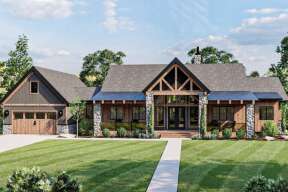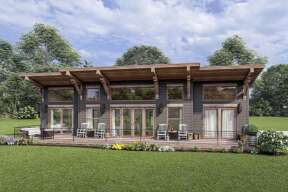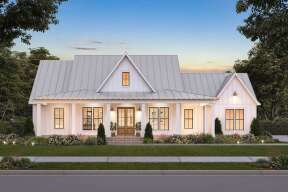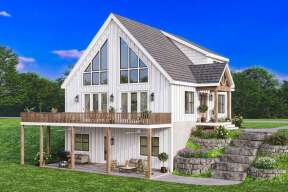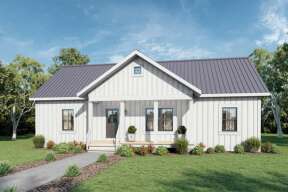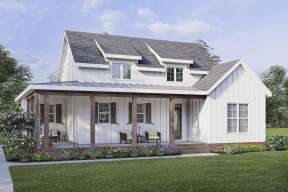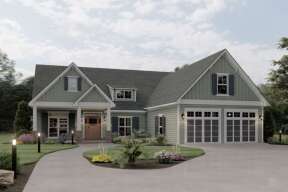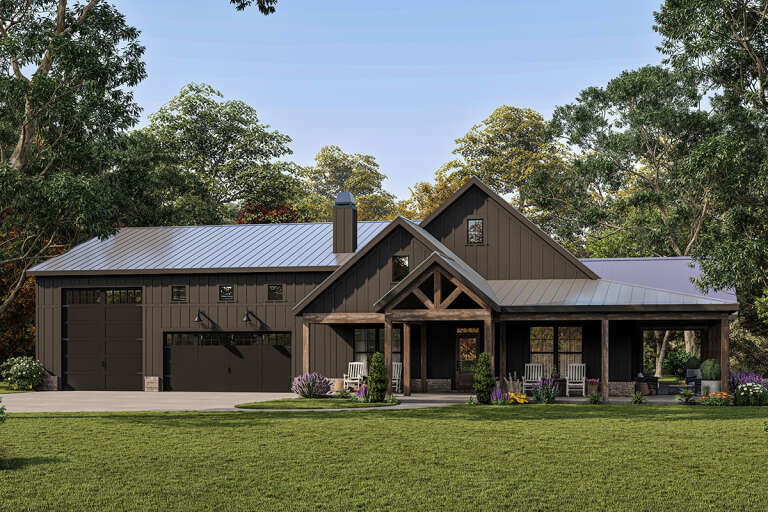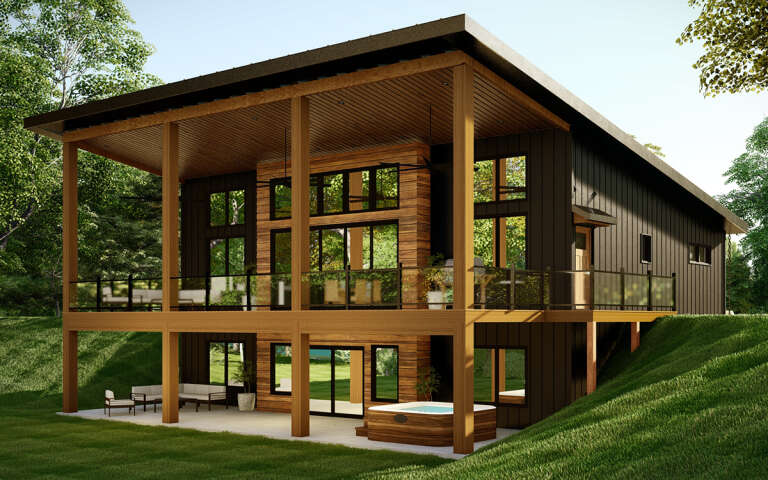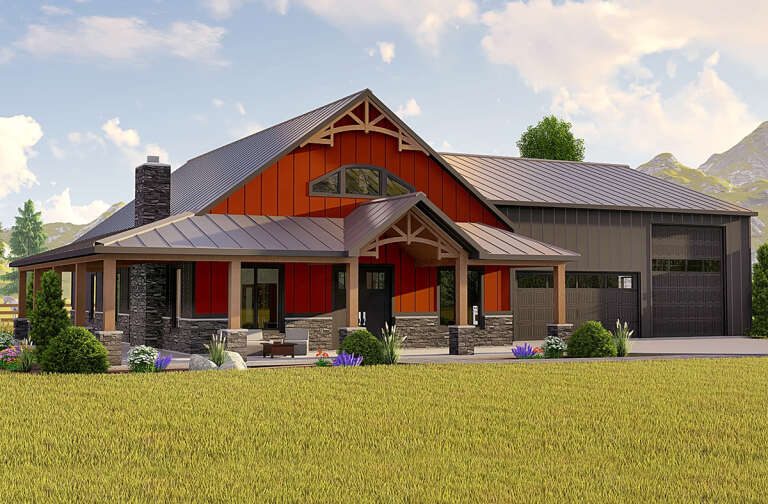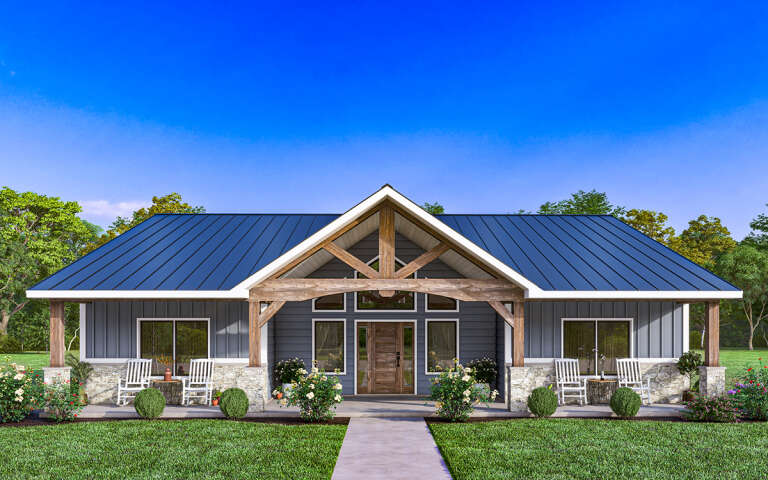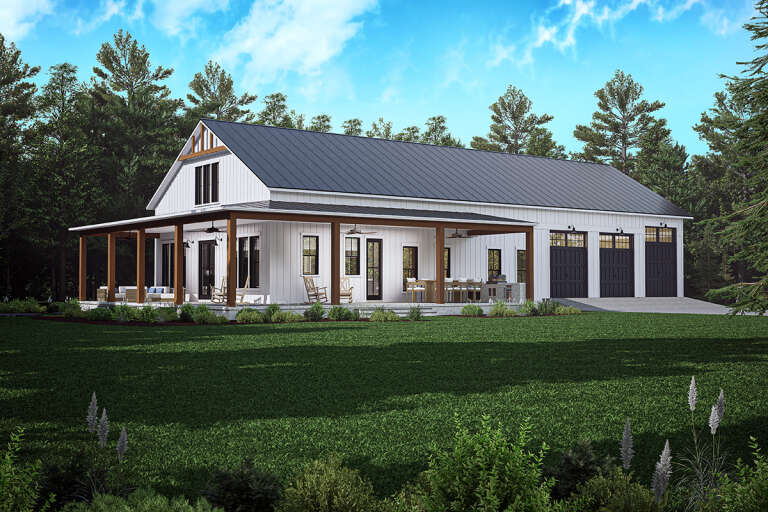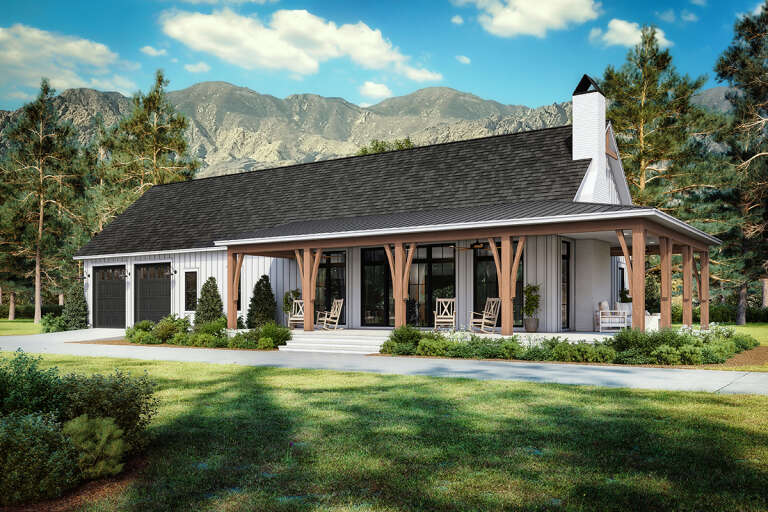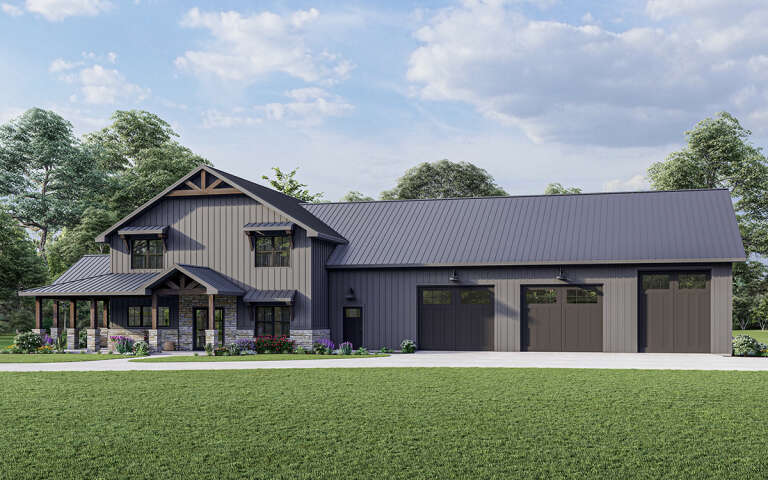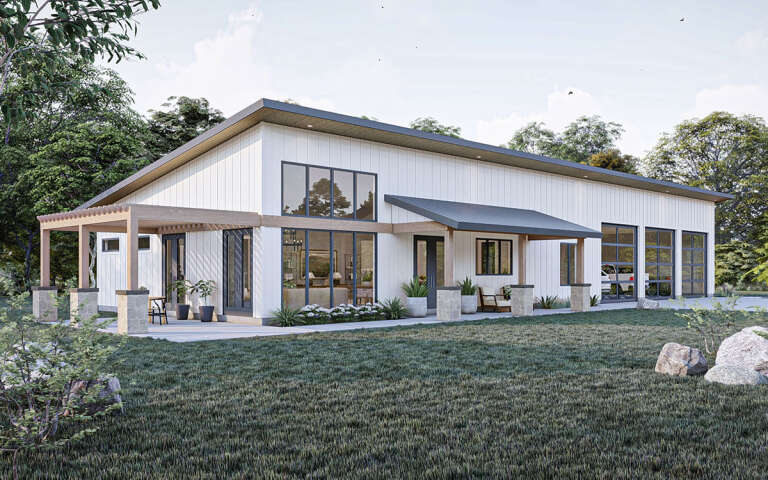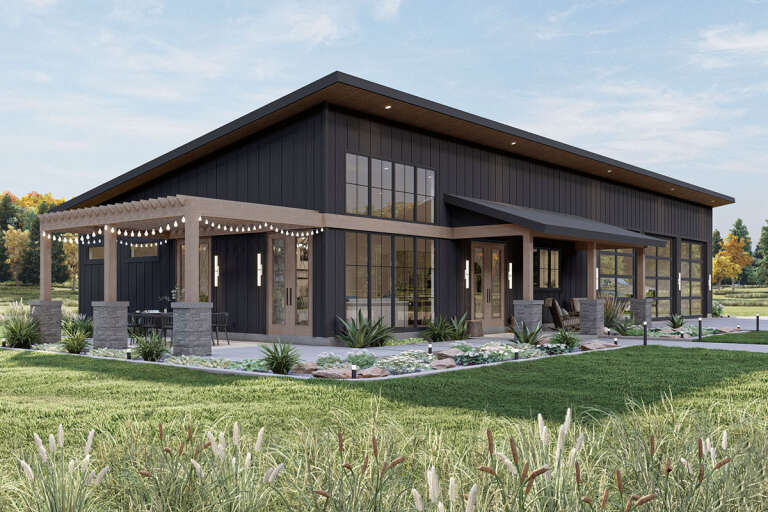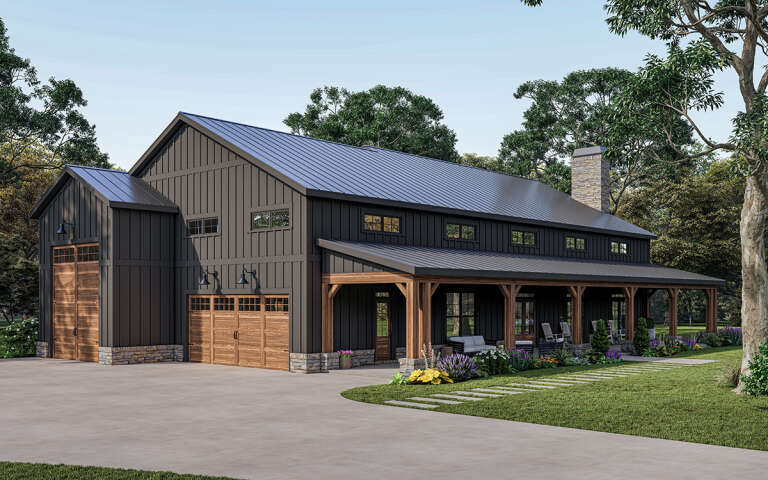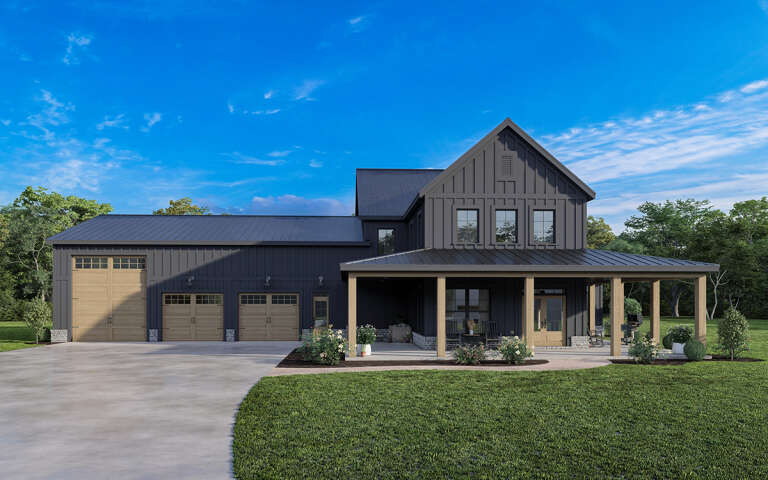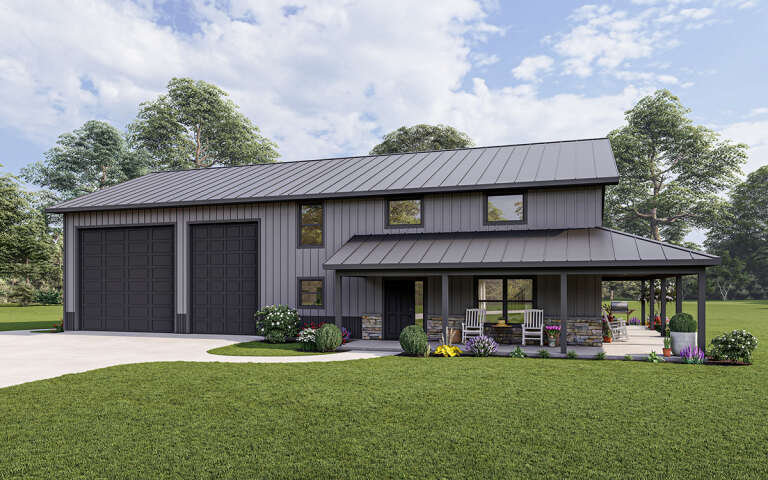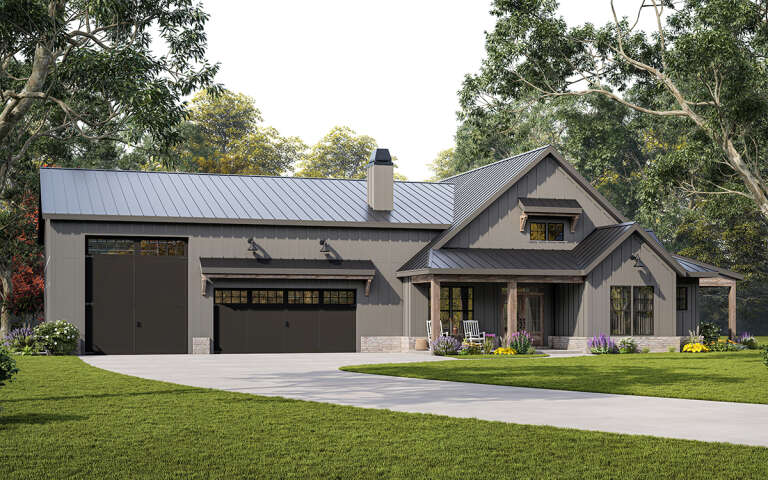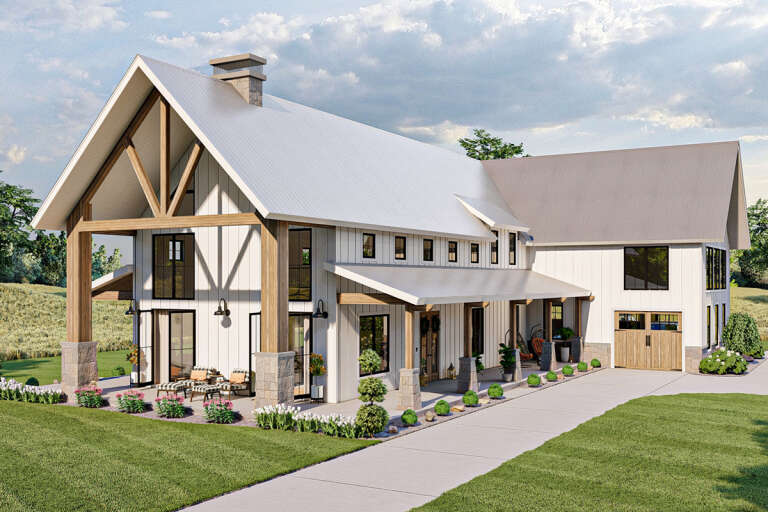293 Results
SORT BY
Barn FAQ
What is a house in a barn called?
Barn house plans, also called barndominium plans or barndos, are instantly recognizable due to their iconic shape and the specialized design materials used in constructing these homes. Their facades often feature design elements such as gables, wraparound porches, warm woods, post and beam construction or timber frames, stonework, and exciting options for the windows and doors of these homes.
Some barndominium house plans and floor plans add a silo on the home's side, offering aesthetically pleasing exterior value and rustic appeal. Steeply pitched roofs and gambrel roofs add textural depth and the ability to dispose of heavy snow loads if your home is in a region with heavy snowfall. These architectural elements create a warehouse home style that adds visual interest, practicality, and allowance for maximum headspace to incorporate additional bedrooms, lofts, or attic space for storage.
Are barn houses cheaper to build?
Generally, barndominium plans are cheaper to build than a traditional house because they use fewer materials. However, that doesn't mean that a barndo, sometimes called for short, needs to be cheaply made. Where you save on the base materials, you can add luxury options, such as granite countertops or a wraparound patio.
Are Barndominiums good in cold weather?
Yes, barndominium house plans are good in cold weather. Due to their construction, they're much more energy efficient and have increased thermal conductivity than standard homes. Additionally, they can withstand significant snow loads on the roof than other designs and have less settling in between the seasons due to the steel siding.
What are the advantages building of a Barndominium/barn house?
Here are some of the advantages and pros of building a barndominium house plans:
- Faster construction. There's less framing needed when building a barn house plan, so the overall construction takes less time than traditional homes.
- Lower cost for the foundation. Most barndos are built on a concrete foundation slab (unless you choose a barndominium floor plan with a basement), making it much cheaper than other homes.
- Better energy efficiency. The post-frame construction of barn house plans is much more energy efficient than the spacing of standard homes.
- Open-concept floor plan. Because some post-frame buildings don't require load-bearing walls, you can have the center of your home as open as you want!
- Less exterior maintenance. The common barndo choice of steel as the siding option is much heartier than the typical home's wood or vinyl siding.
What is the difference between Barndominium and a pole barn house?
The main difference between barndominium plans and a pole barn house is the construction materials used in the frame. In a barndominium house plan, the framing is typically a stick build, but some use steel columns mounted into the concrete foundation. Because of this, there's no need for any load-bearing walls throughout the home, giving them the ability to have an incredibly open floor plan. Pole barn homes use standard wood-post frames anchored into the ground. While the wood framing is similar to traditional houses, the post framing is more closely spaced – between 8-12 feet apart – than typical homes, giving them a sturdier frame. However, you will still need to incorporate load-bearing walls throughout the house.
Want to learn more about designing the barn home of your dreams? America's Best House Plans features a growing assortment of barndominium house plans that display a wide range of options for square footage. From a minimum of 730 square feet to 4,455 luxurious square feet, this collection of barn house and barndominium plans provide a wide range of styles, square footage, and aesthetically pleasing exteriors and interiors. Contact us today to learn more about how we can help!
How long will a Barndominium last?
Barndominiums aren't meant to be temporary structures. However, with regular maintenance, barndos can last for hundreds of years.


